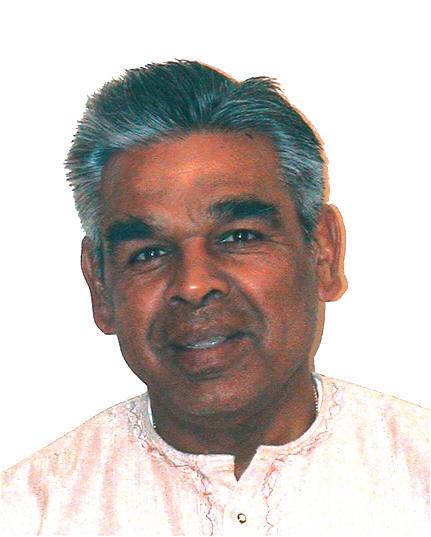
3 minute read
The challenge of diversity
from 2010-08 Melbourne
by Indian Link
Managing the kaleidoscope of India’s cultural, religious and racial mixes is a unique, yet attainable task
BY MALLI IYER
“Civilization should be measured by the degree of diversity attained and the degree of unity retained”, so said eminent British poet WH Auden. It would appear that the poet had India in mind. Our values of universal tolerance, policies of nonaggression and a welcoming attitude to new settlers, religions and racial mixes, are well-known. Our history is dotted with several instances in which we shared our riches with the rest of the world. These are welldocumented facts since the Indus Valley civilization and Hindu scriptures too stand testimony to this.
Our acceptance of global diversity as a fact of life enabled us to welcome the Moguls, the Zoroastrians, the Portuguese, the French and the British traders over a thousand years
A couple of gems have typified centuries of Indian attitudes to diversity. These include Vasudhaiva Kutumbakam, meaning the whole world is a single family. Then we have the prayer that is said at the end of most Hindu rituals: Lokaa samasthaa sukhino bhavantu, meaning, may the people of the entire universe be happy and peaceful. Religious tolerance was preached by Buddha, and equally, Emperor Akbar wrote about the need for tolerance and national integration in his Din-e-Elahi More recently, Rabindranath Tagore incorporated this philosophy in the Indian National Anthem: ...Punjab, Sindhu, Gujarat, Maratha, Dravida, Utkala, Banga...., sending out a clear message advocating national integration.
India’s diversity can be explained in a single sentence: “a young country, but an old civilization”. The staggering simplicity of this statement can be deceptive to the reader, because it has taken our leaders, elder statesmen and greatly skilled politicians, over six decades since Independence to fully understand it, as they continue to struggle to hold India together as a nation.
India has more than 2000 ethnic groups and only Africa exceeds the linguistic, cultural and genetic diversity of the country. With a population of about 1.15 billion, it is one of the oldest civilizations of the world. It is significant that India was the home of the Buddha, Mahavira, Guru Nanak, as well subject to successful raids of religious conversions by Christian missionaries and Islamic clergymen. Our acceptance of global diversity as a fact of life enabled us to welcome the Moguls, the Zoroastrians, the Portuguese, the French and the British traders over a thousand years. India has always believed that trade amongst nations brings about increased contacts between peoples, and that new settlers will inevitably bring with them culturally diverse living styles. It can be safely said that India has been just as resilient to tyranny as practiced by Aurangazeb or the 12th century invader Timur Lane, as to the benevolence of Alexander the Great or Emperor Asoka.
In post-independence India, threats to the unity of India have been many – the separatist movements in Kashmir and the north-east frontier, the Khalistan movement, Naxalite and Maoist movements and even the linguistically-oriented States Reorganization. More recently, the destructive regionalism promoted by the Shiv Sena in Maharashtra state has not succeeded in shaking the foundations of democracy. India’s attempt to hold together as a peace-loving nation has also been jeopardized by cross-border terrorism and territorial disputes in the Himalayan region. The world has now realised that India is unstoppable in its attempt to grow and prosper, these threats notwithstanding. On the contrary, India acquits itself with distinction by not resorting to military suppression or totalitarian policies to quell these separatist elements that have raised their ugly heads.
From the onset, India committed itself to becoming a secular and sovereign democratic republic and successive Governments have adopted nothing but democratic means to settle differences arising from its diversity. All the Indian states and Union Territories have a unique demography, history and culture, festivals, foods, dress and language, and the nation has the challenging task of meaningful assimilation of various cultures and heritage. Modern India continues to hold strong values in all walks of life and the vibrancy of its young population enables it to project a constructive approach to social and economic change. The education/communications revolution which has enabled its youth to adapt to the needs of the information technology age will undoubtedly help them to shed obsolete taboos and age old beliefs. It should also help them avoid political exploitation by religious fanatics, regional bias and caste systems as well as movements like hindutva, which are major obstacles to unity.
Despite being the most ethnically diverse country in the world, India presents itself to the world as a sterling example of unity in diversity. The sceptics of the ‘British Raj’ felt, at the time of granting India its independence, that the dream of its national leaders and their promise of India’s unity in diversity in its constitution would remain unfulfilled. However, the maturity demonstrated by India’s people in preserving their democratic institutions despite stark differences in culture, traditions, habits, religious beliefs, caste and regional attitudes is proof of accurate foresight by leaders and statesmen who plotted the course for the future of India as a living example of peace and harmony, amidst its diversity.
As we celebrate the 63rd anniversary of our independence, our intelligentsia need to put on their thinking caps and embark upon new initiatives – such as reaffirmation of pride in our heritage; encouraging and rewarding attempts at rejuvenating nationalism; underlining the price of freedom at every level of education, and the extensive use of mass media to create a patriotic awareness of India’s progress. Measures like this would enable Indians, at home or abroad, to hold their heads high.









